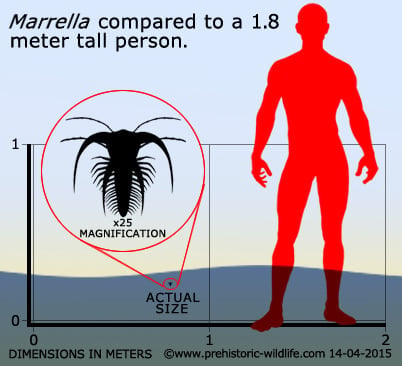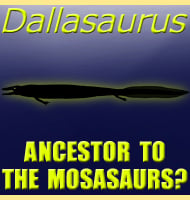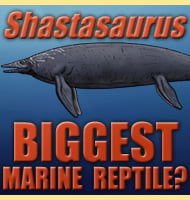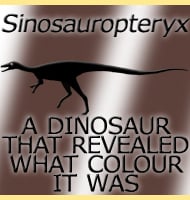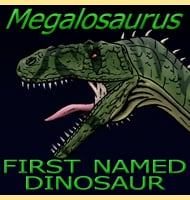In Depth
The genus Marrella has the distinction of being the most common animal found in the world famous Burgess Shale. When first described in 1912 Marrella was thought to possibly be a lace crab, and then later a trilobite. Later studies have now concluded however that Marrella is actually a stem arthropod, related to the ancestors of true arthropods, yet not necessarily an ancestor itself.
Marrella tended to have around twenty-four to twenty-six body segments, and two large pairs of rearward facing spines. The legs of Marrella are interesting in that the upper legs had gills for absorbing oxygen from the water. Some better preserved specimens reveal the presence of a diffraction grating pattern, meaning that in life Marrella would have had an iridescent sheen. All in all Marrella is thought to have been a bottom dweller that sifted through the soft sediment for morsels of organic matter to eat.
Further Reading
- Redescription of Marrella splendens (Trilobitoidea) from the Burgess Shale, Middle Cambrian, British Columbia. - Bulletin – Geological Survey of Canada 209 - H. B. Whittington - 1971. - Colour in Burgess Shale animals and the effect of light on evolution in the Cambrian. - Proceedings of the Royal Society B: Biological Sciences 265 (1400): 967–972. - A. R. Parker - 1998. - Moulting arthropod caught in the act. - Nature 429 (6987): 40. - D. C. Garc�a-Bellido & D. H. Collins - 2004.
